Blog - TECHNICAL TIPS & TRICKS - Solid State Relays - Heat Sink Selection
Heat sinks are an important element in circuit design because they provide an efficient path for heat to be transferred into the ambient air and away from electronic devices (Solid State Relays).
For any electronics design, “Thermal Management” is the key element, which decides the optimal performance and efficiency of the system during its entire product life. This article will give more insights into the Selection of Heat Sinks.
You have 2 possibilities :
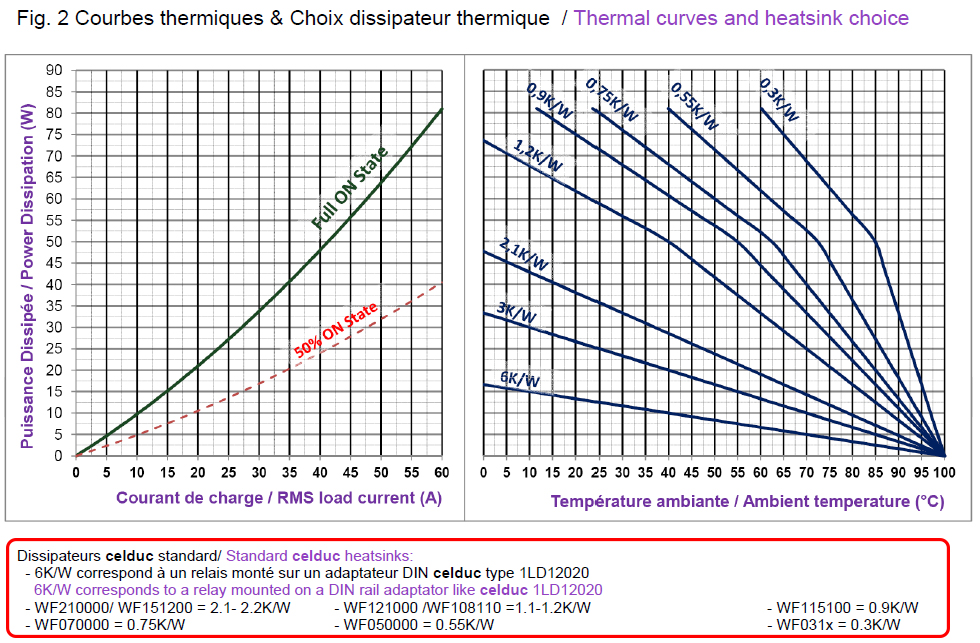
This article will give more insights into the Selection of Heat Sinks so you can make the proper choice. First let’s start with some reminders.
The most important information is the thermal curve giving the thermal resistance depending on the power dissipation. You can see Thermal resistance change with the power dissipation.
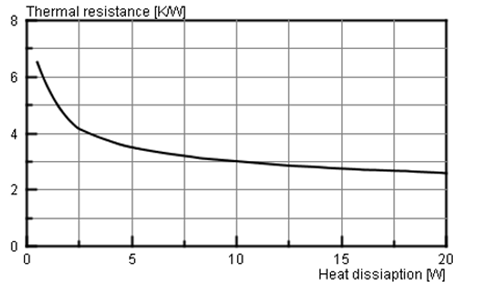
Thermal resistance of an heatsink depends on the power you are applying to.
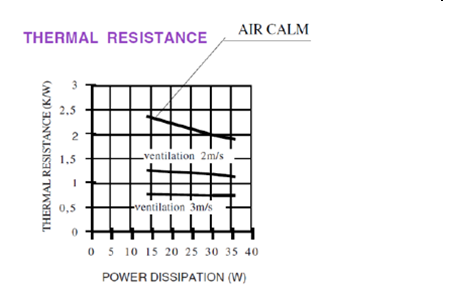
Another curve gives you information about the impact of forced ventilation inside your electrical cabinet. There are basically two types of air cooling: forced air cooling and free (natural) convection cooling. For both types of cooling, the thermal resistance of the heatsink (Rth) is optimized.
Power Dissipation = PD = Power dissipated by the relay. Expressed in Watts (joules per second), corresponds to the thermal current or the calories to be discharged from the relay, mainly depends on the current crossing the relay.
Thermal resistance = Heat sinks are rated by their thermal resistance and measured in degrees Celsius per watt (°C/W). The lower the thermal resistance, the better the heat sink will transfer heat. Thermal Resistance = Temperature/Power Dissipation
The necessary thermal resistance value of the heatsink could be define by calculation or using the curves given by celduc. In fact on our products data-sheets, thermal curves give thermal resistance values of the heatsink required for your application. It makes things more simple !
It is very important to understand that if you bases your choice for the heatsink on the value of thermal resistance we advise, this is not simple and a source of confusion. You need to take the below factor sinto consideration.
When visiting heatsinks manufacturers websites, you will find thousands of heatsinks with different shapes, sizes, parameters, …. Heat sinks generally are aluminum alloy extrusions often with fins that increase surface area and allow airflow.
Most of the time, there is no curve indicating the thermal resistance versus the power dissipation… An additional simulation should give you the real thermal resistance value depending on the power dissipation. You require a special software for this.
Let’s take as an example a Heat Sink given for 1K/W. An addition simulation will point out that 1K/W is reached with 100W. But, with 1K/W at 40°C, our SO965460 (50A SSR) dissipates 55W for 45A. By using this heatsink, its real thermal resistance would be 1.25K/W only, not 1K/W as you guess.
Additional to the lake of information concerning the power dissipation, heatsinks manufacturers don’t specify that the thermal resistance value is calculated by the total surface. This is due to the general theory behind a heat sink which is to increase the surface area of the heat-producing device, enabling a more efficient transfer of heat into the ambient environment. It means that you need a Solid State Relay that has the same dimensions than the heatsink. Of course, it is often not the case.
The below 2 simulations show you the temperature sharing / variation on 2 different heat sink configurations :
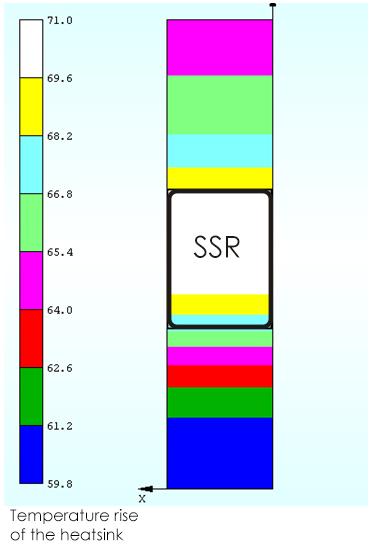
In black you have the surface area of the heat-producing device = SSR
èThe simulation shows a temperature gradient, between the top and the bottom, of 10K. The thermal conduction is limited and therefore the good choice would be a heatsink having its surface twice that of the relay and spread around it.
If you make the calculation of this temperature elevation of 71°C/W with the power dissipation of your SSR, you will realize that the thermal resistance value is not the one announced by the heatsink manufacturer, so no more suitable to your application.
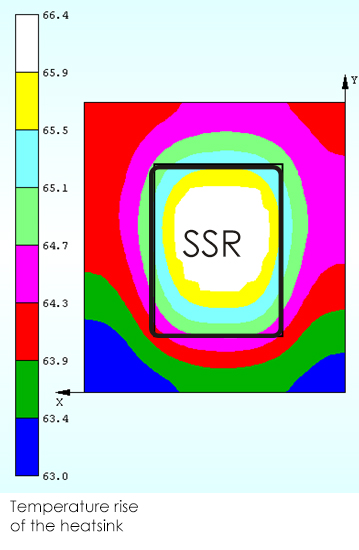
Temperature variation is lower so this heatsink shape is more adapted and allows a better temperature sharing.
Making the selection of the right heatsink is not easy as it depends on the configuration. Lots of parameters should be taken into consideration.
Celduc’s advises :
Thermal Interface Materials (TIMs) play an important role in transferring heat more efficiently and consistently between two surfaces. https://www.celduc-relais.com/en/thermal-interface-materials/